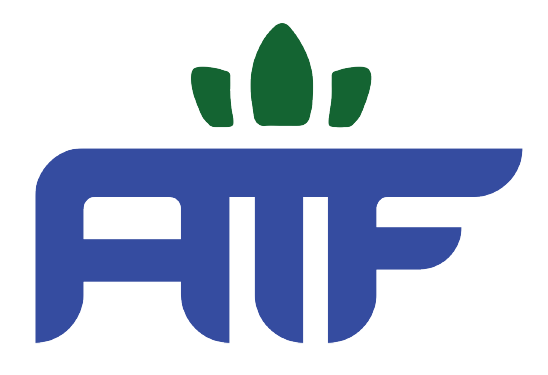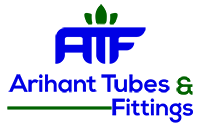Of the total costs, direct material and direct labor were traceable directly to the product cost object. The other costs were either deemed attributable to one of the four activities, or otherwise not allocated. Accurate data on activities and cost drivers may be difficult to obtain, especially for facility-level tasks. Batch-level activities are tasks performed for a group or batch of units rather than individual units. These activities do not depend on the number of units within a batch but rather the frequency of batches. Unit-level activities are tasks performed for each unit of production or service.
Key points about batch-level activities:
Some overheads, by their nature, are organization-sustaining costs that support the business as a whole instead of any specific activity or product. If arbitrarily assigned to activities, these costs can distort the cost-data relationship and provide misleading information for decision-making. If the various types have different consumption patterns of overhead resources, a single activity base might not equally apply to all of them. This can, again, bias the cost allocation and present a distorted picture of the financials. Using an appropriate activity base not only ensures accurate and credible reporting, but it can also help companies identify inefficiencies in their processes. For example, if resource usage per unit of the activity base is high compared to industry benchmarks or historical averages, it might indicate areas where processes can be streamlined or waste can be reduced.
The first product is GLASSESong, a pair of sunglasses with a built-in speaker.
For instance, for a manufacturing company, the activity base might be the number of units produced. On the other hand, for a logistics company, it could be the number of miles driven. By measures the resources used per unit of the activity base, it gives a clear insight into the sustainability performance within the context of operational activities. The traditional method of cost allocation assumes that all products consume resources at the same rate, often leading to inaccurate cost calculation. Facility-level bases tie to the overall operation of a company and don’t link directly to individual units, batches, or products. Examples may encompass rent for the building, property taxes, insurance, or security.
Accounts Payable Essentials: From Invoice Processing to Payment
But, for multi-product/service firms, the arbitrary allocation of costs can pretty much “make or break” the perceived profitability of each product or service. As companies have grown larger and more diverse in output, there has been an accompanying concern about how costing occurs. Arguably, product diversification has been a major contributing factor to the management accountant’s pursuit of alternative costing methods like ABC. Facility-level activities are tasks that support the entire organization or facility rather than specific products, batches, or units.
Now, since you have all the data needed, calculate the order cost using activity-based costing. While he has 50 skilled carpenters and 5 salespeople on his payroll, he has been taking care of the accounting by himself. Now, he intends to offer 40% of the ownership to public in next couple years and is willing to make changes and has hired you as the management accountant to organize and improve the accounting systems.
- Its accuracy and relevance have the potential to influence a company’s pricing strategies, inventory valuations, budgeting processes and ultimately, its overall financial health.
- Batch-level activities are one of the five broad levels of activity that activity-based costing account for.
- For instance, consider a manufacturing firm that identifies energy use as an activity base.
- These inputs are the outputs from previous activities within the company and / or outputs from another entity (for instance an outside supplier).
- Each of these levels is assessed by cost, and these costs are allocated to the company’s overhead costs.
Accounting for Managers
Be sure it is written to be understandable to someone who is not an accountant. Which company has a higher ratio of costs, defined as cost of goods sold plus total operating expenses, to revenues? Use the two most recent years’ income statements from Appendix A. Show your analysis.
- Facility level activities are activities that are conducted at the plant level.
- Kohler could not use a traditional managerial accounting system for these kind of operations.
- Unit level activities are activities that are performed on each unit of product.
- Batch level activities are activities that are performed whenever a batch of the product is produced.
Unit-level activities are those that support making each individual unit, while batch-level include a group of units. A manufacturer uses activity-based costing to assign overhead costs to products. Once the per unit costs are all calculated, they are added together, and the total cost per unit is multiplied by the number of units to assign the overhead costs to the units. Batch-level activities are one of the five broad levels of activity that activity-based costing account for. Each of these levels is assessed by cost, and these costs are allocated to the company’s overhead costs. The way in which companies will structure the schedule by which machines are set up is an example of how batch-level activity accounting can influence the practices of a manufacturer.
Batch-Level Activities
For example, a software company might measure costs for one product based on ‘code lines written’, and ‘hours of customer support’ for another product. Robin Cooper and Robert S. Kaplan, proponents of the Balanced Scorecard, brought notice to these concepts in a number of articles published in Harvard Business Review beginning in 1988. Cooper and Kaplan described ABC as an approach to solve the problems of traditional cost management systems. These traditional costing systems are often unable to determine accurately the actual costs of production and of the costs of related services.
Organizations rely on activity-based costing (ABC) for the meticulous allocation of costs to products or services. Activity base, essentially the cost driver, provides a fairer and more accurate method for this allocation, helping to spot inefficiencies and streamline operations. In relation to CSR, this optimal cost allocation can significantly impact a business’s sustainability. In such companies, activity‐based costing (ABC) is used to allocate overhead costs to jobs or functions.
This sustainability action aligns precisely with an exemplary environmental responsibility mandate, a pivotal component of CSR. When talking about the relationship between activity base and Corporate Social Responsibility (CSR), it may not seem apparent at first sight. However, an informed exploration reveals indirect links, predominantly mediated through cost allocation processes and an organization’s relation with various stakeholders. Activity Base is an intrinsic part of the Activity-Based Costing (ABC) method. For example, before production begins, the printing machines must be set up with the appropriate design and color settings. This machine setup process is done once per batch, whether the batch contains 50 shirts or 500.
Unlike unit-level activities, which are performed for each individual unit, batch-level activities are dependent on the production batch size. Unit level activities are activities that are performed on each unit of product. Batch level activities are activities that are performed whenever a batch of the product is produced. Product level activities are activities that are conducted separately for each product. Facility level activities are activities that are conducted at the plant level. The unit-level activities are most easily traceable to products while facility-level activities are least traceable.
Companies need to identify cost events, determine their cost drivers, gather relevant data, and update this information periodically. For instance, consider a manufacturing firm that identifies energy use as an activity base. Splitting energy costs per product unit with ABC can expose high energy-consuming activities. With these batch-level activity insights, the company could invest in energy-efficient machinery or technology, effectively reducing energy consumption and decreasing their carbon footprints.
Assigning costs to activities takes time, as does identifying and tracking cost drivers. And assigning costs to products requires a significant amount of time in the accounting department. Imagine having 15 cost pools (activities), each with a predetermined overhead rate used to assign overhead costs to the company’s 80 products—not an unrealistic example for a large company. The accounting costs incurred to maintain such a system can be prohibitively high.


Recent Comments